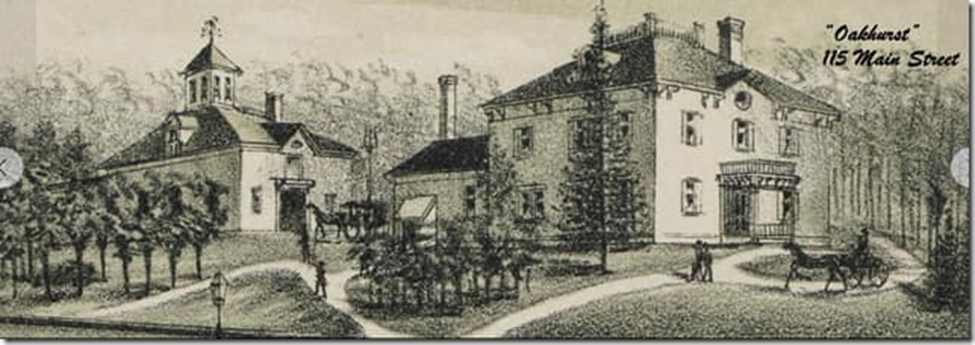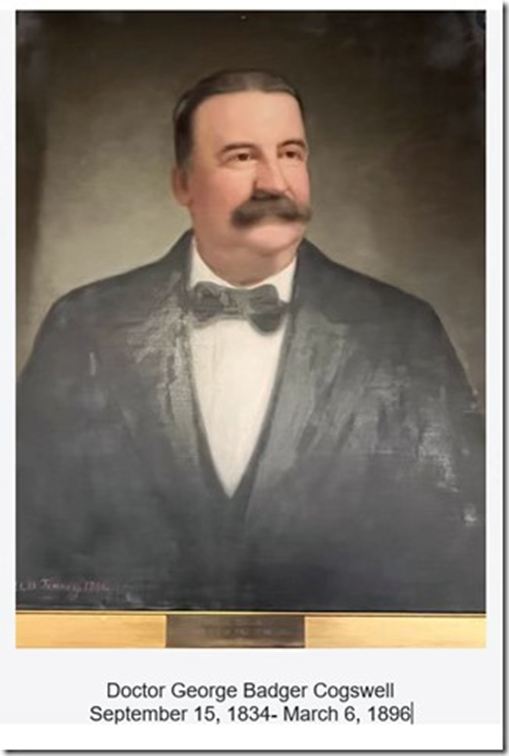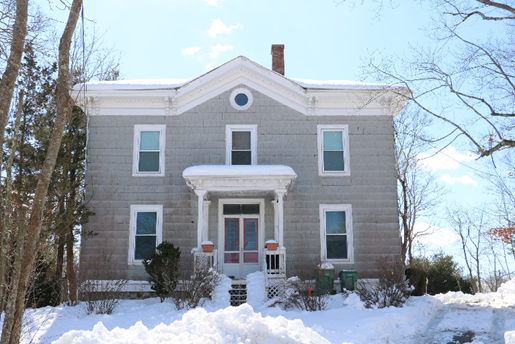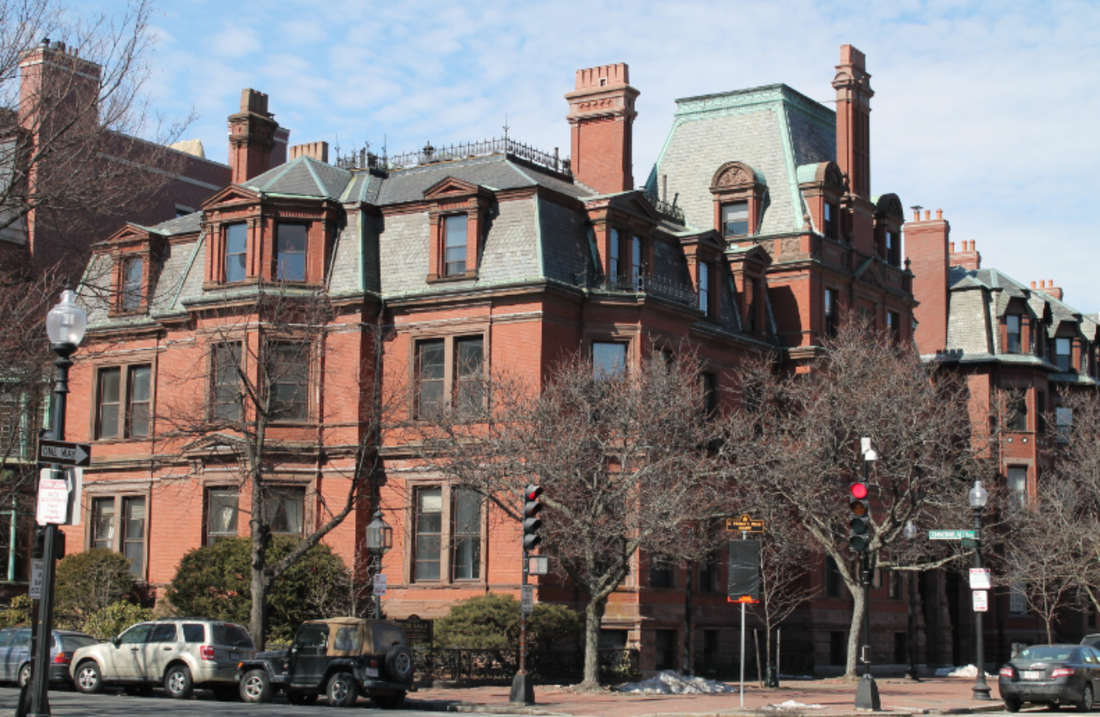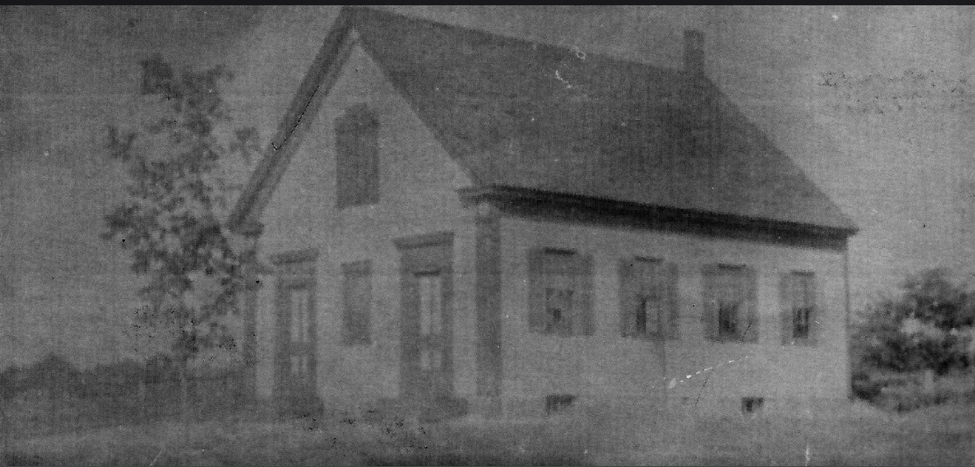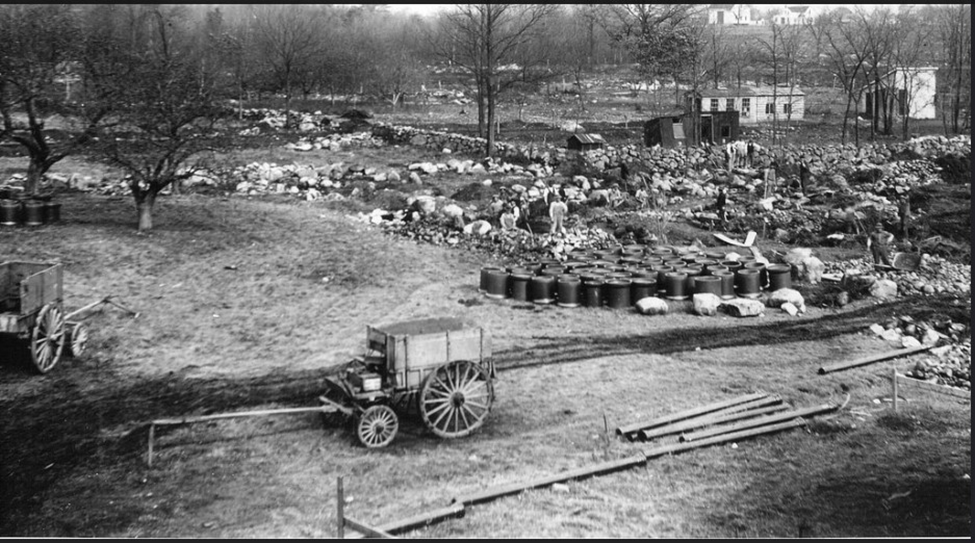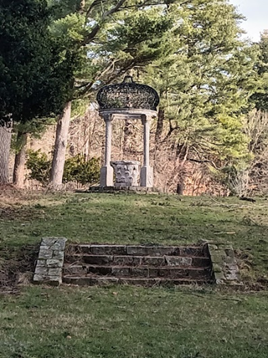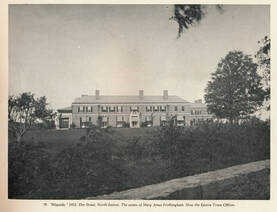|
"I am grateful for the privilege of paying my humble tribute to your dear husband, to whose kindness and thoughtfulness I owe my life." To Mrs. Cogswell from A.J. Leavitt, North Easton, MA The Open House on Sunday, January 21st was dedicated to George Badger Cogswell, M.D. George Badger Cogswell, M.D. was many things in his sixty-one years: college student, sailor, wanderer, physician, postmaster, soldier, upstanding citizen of Easton. He was born in Bradford, Massachusetts on Sept. 15, 1834, and by 1860 was living in North Easton Village. He served as assistant surgeon in the Union army and later was promoted to surgeon. He treated wounded men on and near the battlefield at Antietam.He was with the 2nd Corps hospital at Harpers Ferry. While working as acting medical inspector of the Ninth Army Corps he willingly gave himself up as a prisoner in order to aid the wounded and sick prisoners of war. He is said to have, through a clever ruse, pretending an authority he didn’t have, helped some very ill soldiers escape to safety during prisoner exchanges. One Easton resident told History of Easton author William Chaffin that Cogswell saved his life in this manner. Oakhurst, 115 Main Street, North Easton. In 1861 Cogswell was appointed Easton’s Postmaster, an office which he held for 24 years. During the times he was absent serving in the War, others filled in for him. In 1880 Dr. Cogswell lived at 115 Main Street with his wife and 2 children in a home they called Oakhurst. Dr. Cogswell was very involved in the Easton community and obviously very much respected. When the Easton Paul Dean Masonic Lodge was established 1867, Cogswell was named Worshipful Master. In 1868 he was a charter member of A. B. Randall Post, G. A. R. No. 52. The North Easton Library Association was organized in 1869 (prior to the establishment of the Ames Free Library) and Dr. Cogswell was chosen librarian. He was one of 50 shareholders, but any person could pay $2 per year and use the reading room that was located in the same building as the Post Office. Papers and magazines were provided.
After the war he had a flourishing practice in the Easton area and was personal physician to members of the Ames family. When the Soldier’s Monument in Easton Center was dedicated on Memorial Day in 1882, with about 2,000 people present, Dr. Cogswell was President of the Day. He was a charter member of the Knights of Honor, instituted in 1879. In 1896 the Cogswells were living in Stoughton when Oakhurst was moved west to make room for the North Easton Grammar School which was later built on that site in 1916. George passed away in 1896, his wife Catherine in 1898. Today Oakhurst still stands on Main Street, a physical reminder of the good doctor and his well-lived life.
0 Comments
Wayside A walk down Elm Street from Main Street will take you past the Easton Y, Shoveltown Brewery, the back of the Governor Ames Estate, beautiful older homes, Spring Hill, and then Wayside. Wayside, the home of Mary Shreve Ames, later Mary Shreve Ames Frothingham, was built in 1912. Today what remains of the Wayside estate sits just east of Whitman’s Brook Drive. It was designed by architect Guy Lowell. Five years after Mrs. Frothingham’s death in 1955, Wayside was gifted to the town for $1. Today, the lovely Georgian Revival mansion is the home of the Easton Town Offices. When Mary Shreve Ames decided to build her own home she began buying land on Elm Street, just across the street from her childhood home, Langwater. This took some time. The sketch below, taken from the booklet Wayside written by Hazel Varella, illustrates the various parcels, and from whom they were acquired. Four houses had to be moved down the street to make room for the future Wayside. They are now the homes located at 154, 158, 160, and 164 Elm Street (from Wayside by Hazel Varella). I believe those houses are now gone and newer homes have replaced them. As the photo below indicates Elm Street at the time of construction was quite rural. According to Frank Meninno in a previous EHS blog, Elm Street was still a dirt road. Spring Hill, the home of William Hadwen Ames, was built off Elm Street in the mid-1890’s and can be vaguely seen in the rear center of the above photo. Easton Historical Society. Wayside under construction. Easton Historical Society.
Mrs. Frothingham (she married Louis Adams Frothingham in 1916) was a generous philanthropist, giving time and financial support to the Easton Schools, Unity Church, Ames Free Library, the Red Cross, Frothingham Park, and more. Interestingly, Mrs. Frothingham was very much involved in the anti-suffrage movement, while her cousin-in-law Blanche Ames at Borderland, was a noted suffragette. “Despite this, the two women maintained a friendly and cordial relationship, agreeing to disagree. For example, when the 19thAmendment passed, guaranteeing women the vote, Blanche telephoned Mary to ask whom she should vote for in the coming election.” (Blanche Ames Archives-Oakes Ames Memorial Hall) What I love most about Wayside is the ghost of the once brilliant rose garden and the marble well that still remains. Still a lovely spot. If you continue walking to the end of Elm Street and take a left you’ll soon come to The Beanery on Washington. Stop in and enjoy a hot coffee and a decadent donut! |
Author
Anne Wooster Drury Archives
June 2024
Categories |
Easton Historical Society and Museum
PO Box 3
80 Mechanic Street
North Easton, MA 02356
Tel: 508-238-7774
[email protected]

